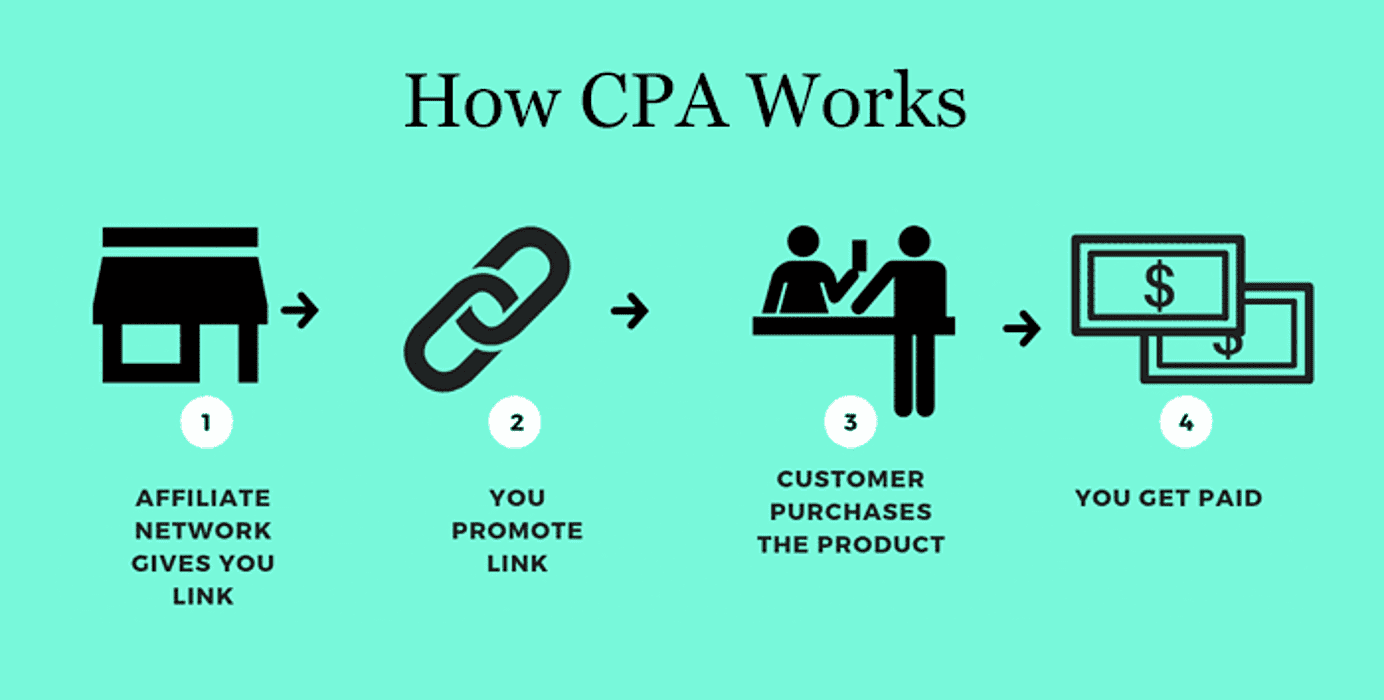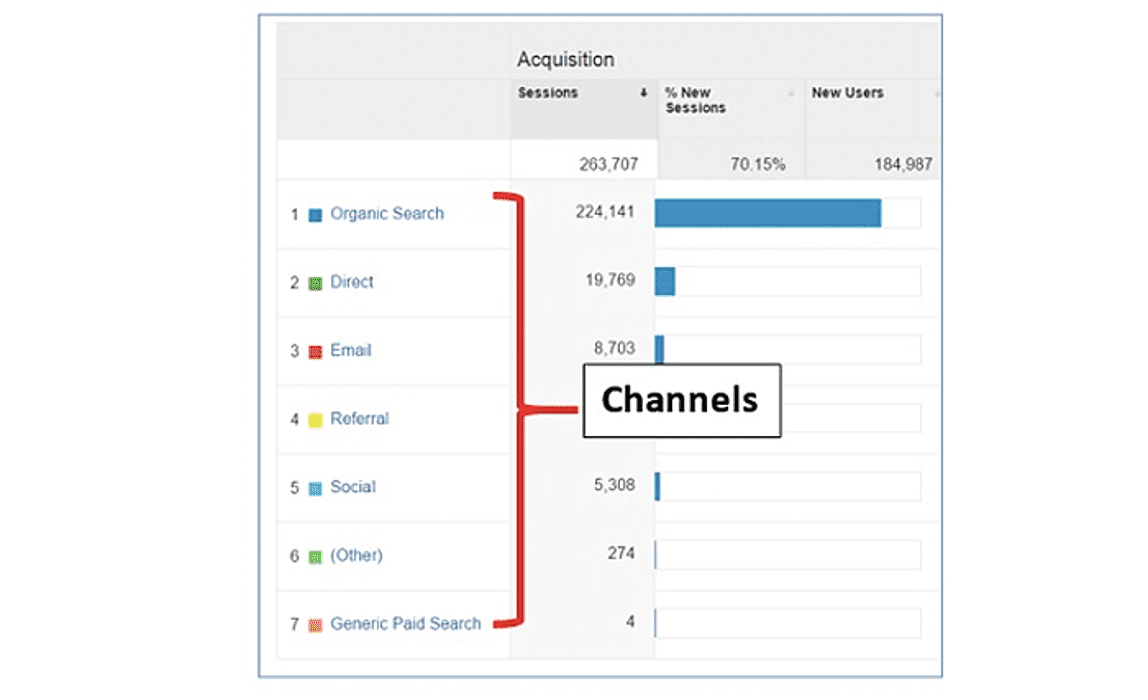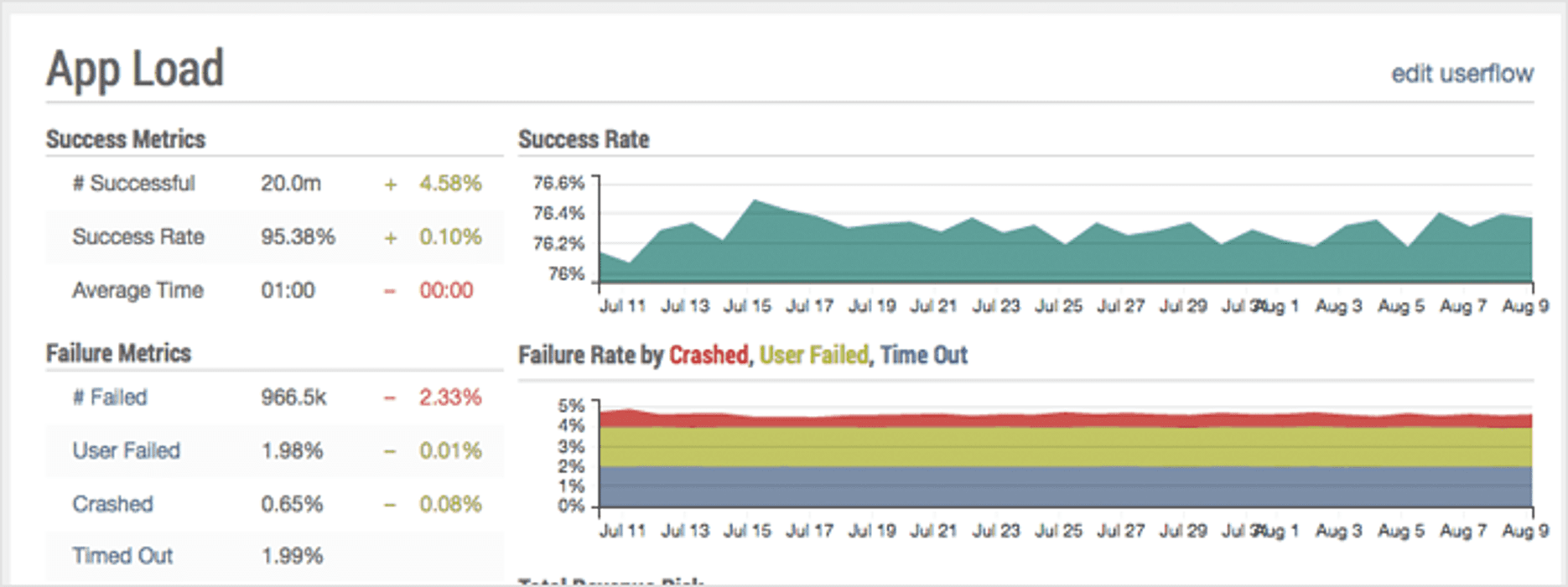
Developing a mobile application is not only about adding great functionality but also includes features that promise its success. The good news is that key performance indicators are available to take your mobile app to the next level. When it is about the application, downloads matter for sure! However, the download numbers won’t matter much unless your mobile app is getting the true popularity.
Turning an average product into a successful venture is all about the strategies you are using. The tools and techniques are almost the same but it is all about how you are implementing the strategies. An exceptional implementation would result in mobile app success, whereas failing to do the same could have negative results. Well everyone will tell you the strategy to keep your eye on, we the MobileAppDaily team after a thorough research are sharing ways to practice the same.
Role of Mobile App KPI Metrics
The term KPIs stands for Key Performance Indicators, these are the ones that help you in figuring out the real value of your mobile app and how you can assess the performance of your application from different perspectives. Here are some of the most important mobile app KPIs that are used to measure the performance of a mobile app:
1. Retention Rate
The app retention rate can be defined as the total number of users that come back to use the app after a certain amount of time has passed. App retention can also be referred to as the long-term success of a mobile app i.e. longevity of the app. The formula for calculating an app's retention rate is as follows:
Retention Rate = ((CE — CN) / CS)) X 100
Where CN is the number of new users acquired during a set period of time, CE is the number of users stayed by the end of the time period and CS is the number of users that came during the initiation of the time period.
2. CPI and CPA
The CPI (Cost Per Install) is used to measure your app's user acquisition costs for the people that have installed your app after coming across a promotion tactic like an advertisement for your app etc. This primarily focuses on the paid app installs rather than tracking the app installs that are organic in nature.

On the other hand, the CPA (Cost Per Acquisition) doesn't really focus on the conversions that are occurring because of a new app user. But it considers user behavior when activities like joining a subscription, making an in-app purchase, upgrading to a PRO version of an app etc. takes place.
3. Stickiness
Stickiness is an interesting KPI that a majority of app publishers don't think of as an important measuring factor. Basically, the stickiness of the app shows you how often people are using your mobile application.
Stickiness = DAU / MAU
The formula for calculating the app's stickiness is quite simple and you only require two variables for it. These variables are MUA i.e. Monthly Active Users and DUA, which are the Daily Active Users who engage with the app.
4. Track acquisition metrics
Tracking acquisition metrics helps in determining the channels from where users are coming to your application. As much as your app is visible, the more it will get traffic from different marketing channels. Let’s have a detailed look at different metrics under this headline.
5. Acquisition channel

Acquisition channels can provide all the information about how existing users are finding your app, which will help you to target new users. Users may reach out to your application through an organic search, social media campaign, word of mouth and referrals, the effect of which could be added to add prominence to the overall result.
6. Cost per acquisition user
The cost per acquisition user equals the number of users by the cost of marketing. The money acquired to pay to users sums up the cost per acquisition user.
7. Customer lifetime value

Customer lifetime value or CLV is the revenue acquired from a customer by the company before the users abandon the app. The lifetime value of customers should be bigger than the value acquired. Otherwise, you won’t be able to make money from the application.
8. Session Interval and Depth
Session Depth is the number of interactions happening in a particular session, or in other words the distance is covered by user paths before their app session is complete. For example, the session depth of upgrading in a gaming app is more than using the app for a shorter time period to view its content.
Whereas, the session interval of a mobile app marketing signifies the amount of time that has been spent in between the sessions users such as the weekly and monthly user visit of the app. The short intervals are considered much better in comparison with the longer intervals. For example, if your app offers new content every couple of hours then longer sessions are great otherwise shorter intervals are desired.
9. Registration and Subscriptions
Registration is one of the most crucial key performance indicators because it helps in building a fan base or supporting the community for the app. You might have even noticed that now almost every other app requires user registration to access the mobile application. With the help of registration, you can also collect users' basic information like email addresses, which can be later used to send newsletters and updates regarding the app.

The above image shows the mobile applications that are a great example for apps that offer subscription services to their customers like Netflix, online movie streaming service and Dropbox.
Getting a subscription to an app is a quite popular way of generating revenue through your web or mobile app. Several apps offer a facility to subscribe to new updates from the app, which can be in the form of video content as well. As an app owner, it's your responsibility to keep track of users that are subscribing and unsubscribing to your app to understand the user behavior regarding your application.
10. App crash Analytics
If you might have been the victim of an abrupt app closely, this is a well-illustrated example of an app crash. Frequent app crashes lead to user disappointment, which may have a negative impact on the overall app branding. The app crashes for a number of reasons, including sloppy code and network errors, as well as inefficient testing. Google mobile analytics is a potential tool that can offer you information about app crashes and the measure to sail through it successfully.
11. Average time screen rendering
In the layman’s language, the average screen rendering time is the duration an app takes to load the content including images, videos, and animation as well. Screen time may differ from one app to another depending upon its complexity, inconsistent fonts, excessively blocked scripts, inaccurate screen dimensions and other such metrics.
12. App load per period
The number of transactions your app can handle within a given time period determines the app load per period. It is important for you to know the maximum limit of your app to handle app load per period. It will let you know how many features you can add for the users so that the app didn’t crash even if the users click on a certain feature so many times.

13. API Latency
API or application programming interface is the part of the server that sends and receives the responses. Take the example of Facebook, when you are logging in to the system you are requesting access to the Facebook server. As soon as the server interprets your request, it displays the page from where users can log in to the page. Keep, this time around 1-3 seconds for your app to respond on the same to the users’ queries.
Other than above-mentioned KPIs there are more strategies like ASO (App Store Optimization), social media marketing, app promotion etc. which requires in-depth analysis on a regular basis through specific performance measuring tools.
Right Ways To Practice Mobile App KPIs
Below is a list of the right ways that you can try out to practice mobile app KPIs:

1. App Strategy
Apps are the doorway for brands to be practically in the palms of the users 24*7. The chance must not be wasted just like that. It is a huge opportunity to get the brand value back from the users by offering them free samples like white paper, subscription & early bird discounts. This adds more to the complete brand value and gives a reason for users to try a brand’s service.
The best mobile apps are those that truly offer something valuable to the users by implementing an exceptional app marketing strategy. Let’s take the example of the Facebook app. The app is a world in itself. And the best thing about the app is that it not only offers the information but also a perfect blend of entertainment and news to the users. Due to the same reason, the social media giant’s popularity is no surprise for users.
2. Mobile App Usages
If people are using your mobile application, it is sure they are getting value from it whether for ordering their favorite food or simply to kill time. Truly successful mobile apps provide a clear solution to the users for at least one of their problems. The mobile apps that are visited regularly have the best app usages for the users. App usage is effective but for the publisher, it is important to have the data.
Beyond pure usage, it is important to know who is using the mobile app and how it is being used? How frequently are the users using the application? What is the duration of the application they are opening? Are people using their Android or iOS device to browse through your application? All these metrics are important to get information about when talking about app usages.
3. App Installation Rates
App installation is a step forward for mobile app download. Just because an app was downloaded does not mean it was installed successfully. Thus, it is important to have the information on the mobile app installation rates also. Therefore, tracking actual app downloads on various devices is again important to add another metric to the successful mobile app KPI practices.
Having audience data is one thing and having actual insights into the app installation is another. The installation rates will only increase if the mobile app offers out-of-the-box experience to the users which includes app functionality, the app graphics, user-interface and the value it offers to the users. Blending all these metrics together will help to increase the actual app installations i.e. the overall mobile app downloads.
4. Number of Users
Being a mobile app user is one thing and becoming an active user is certainly the other. Everyone can download and install an app but it is the actual number of active users that plays a role in the app's success. The monthly active users (MAU) and daily active users (DAU) are the ones who will help your app to become successful among the competitors.
The way users are using your application offers their behavioral pattern. Including the elements of behavioral patterns that users like will help your app to be successful. The elements and features users like in your applications are the ones that will help you to gain more insights on the application. The number of active users is thus a metric for your app to gain popularity not only among the users but also in the app store.
5. App Load Time
The load time of your application is an important metric to either make it successful or be the reason for its failure. The loading time needs to be as minimal as it could be so that users don't need to wait for the same. As long as the app takes to load, it will itself kill the possibility of gaining more and more users. Thus, it is important to minimize the load time of your application in order to delight the user's browsing experience.
The app’s load of time matters and thus the app publishers must consider using light graphics in the application. The use of images must be done thoughtfully in order to make it easy for the websites to load easily. In case your website takes more time to load, no one is ever going to wait for your website to load.
If you want to effectively measure your mobile app marketing tactics then you need to be aware of the different types of KPIs that are involved in the process.
Final Thoughts
Sometimes measuring your mobile app marketing can be an overwhelming task to perform on a regular basis and that's why a number of brands and organizations turn towards professional apps. These Mobile App Marketing Companies can save you from the extra efforts and help your app achieve new heights in app stores.
In fact, the app marketing agencies offer a ton of other benefits as well, such as providing exclusive marketing tools, various industry connections, marketing expertise and a new outlook with app marketing campaigns. We really hope that with the help of this article, some of your doubts regarding how to measure your mobile app marketing strategies would have been cleared.
And if you still have any queries regarding the concepts of app marketing, mobile app KPIs and how it works then feel free to leave a 'Comment' in the section down below and we will get back to you at the earliest.















